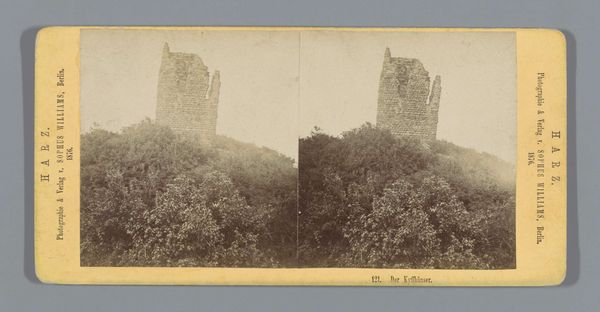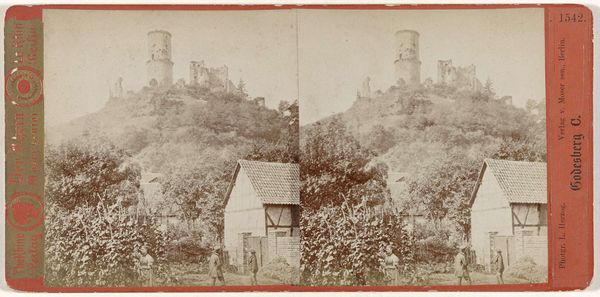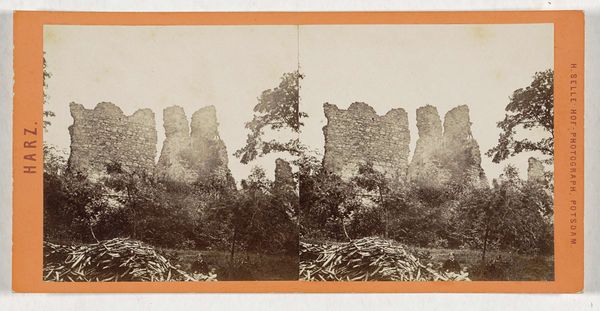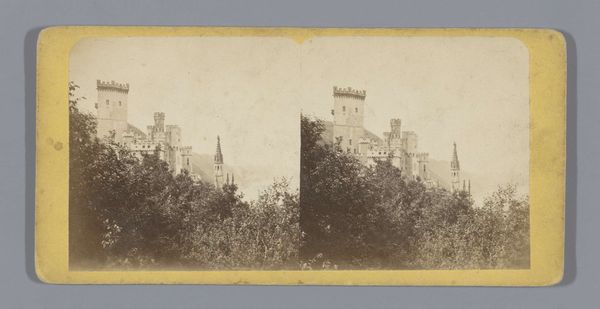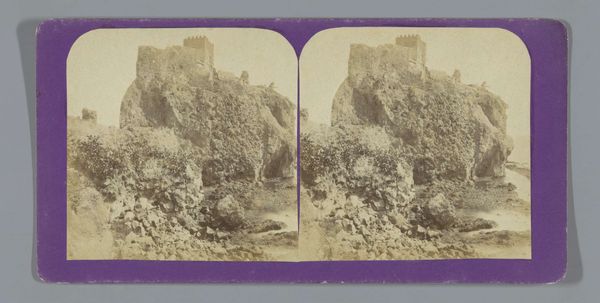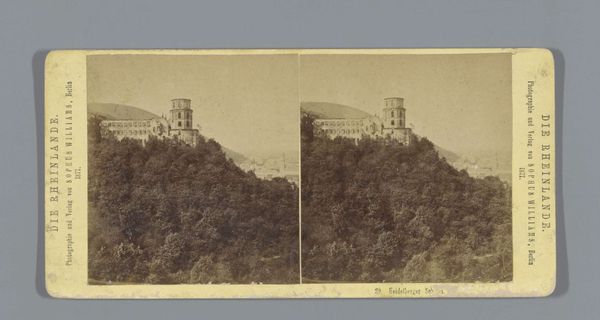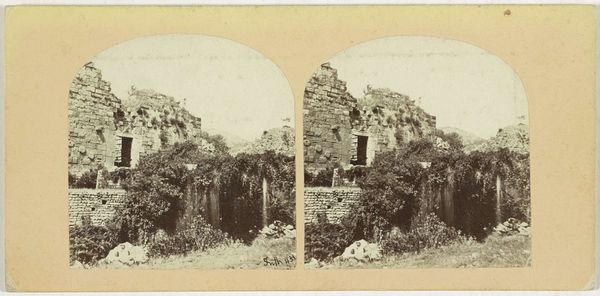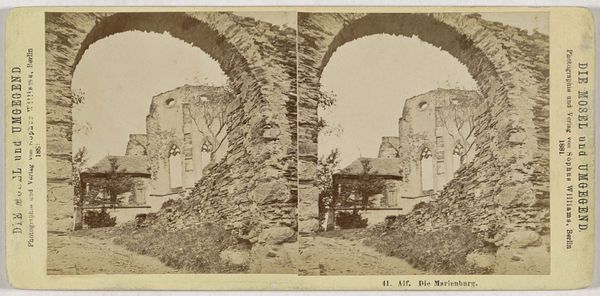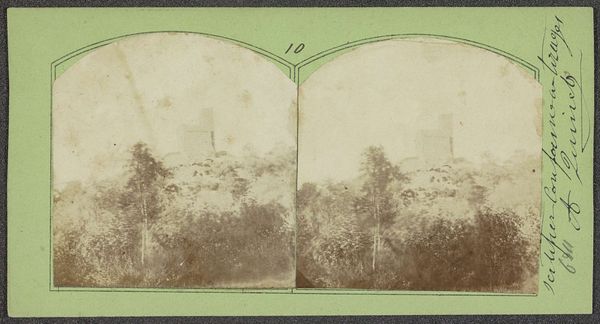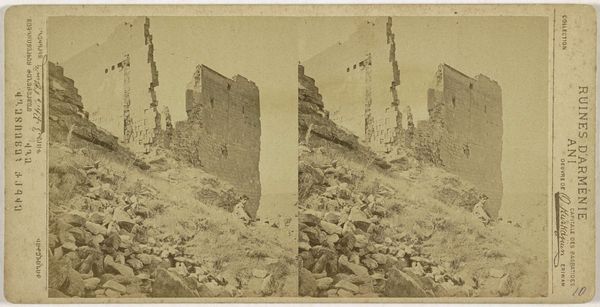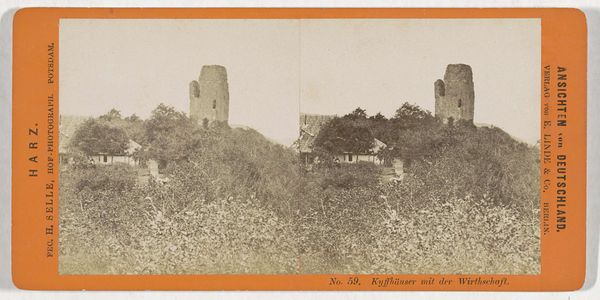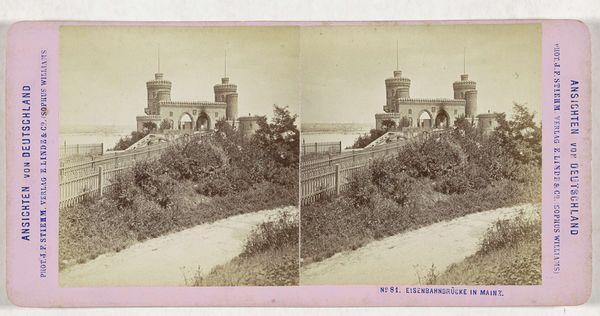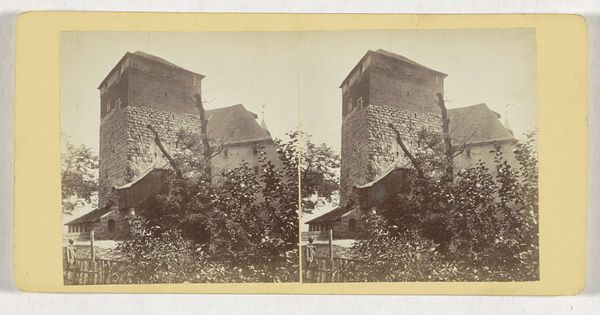
Dimensions: height 86 mm, width 176 mm
Copyright: Rijks Museum: Open Domain
Editor: Here we have "Towers of Ruined Godesburg, Bad Godesberg," a gelatin silver print from sometime between 1868 and 1890 by Philipp Remelé. There's a melancholy feeling in this image of crumbling ruins. What catches your eye when you look at this piece? Curator: I see a fascinating intersection of history, power, and the romanticization of ruins. The choice of gelatin silver print, a relatively new technology at the time, to document such an ancient subject highlights the tension between progress and the past. Who were the Godesburg ruins originally built to protect, and from whom? What power did they once represent, and how does that power shift as the structure crumbles and nature reclaims it? Editor: That's interesting to consider. So, it's not just about the pretty landscape? Curator: Not at all. The artist’s perspective, choosing to capture this specific subject matter and to distribute this stereo image as a commercial item speaks to cultural anxieties of the time. The stereotype cards were distributed from Berlin to London – imagine, what does it tell you of a powerful centralized location documenting the borders and peripheries? How can we decolonize the view to these artifacts and connect to the land directly? Consider the labor involved in both building the castle, the war that led to its demise, and in the making of the image. What narratives are silenced in this romantic portrayal? Editor: I hadn't considered the political implications of ruins so directly. It really brings a whole new dimension to understanding the photograph. Curator: Precisely! And considering those implications invites us to confront contemporary struggles for justice, as it serves as a reminder of the cyclical nature of power, decay, and potential renewal. We have to learn how to use photography to address forgotten or neglected communities that are struggling even nowadays. Editor: Thanks, I definitely have a lot more to think about regarding this photograph now. Curator: Indeed. Now the art piece also encourages a decolonization view, for our common future, rather than simply focusing on the historic interpretation, if you consider the modern viewers' perspectives.
Comments
No comments
Be the first to comment and join the conversation on the ultimate creative platform.

